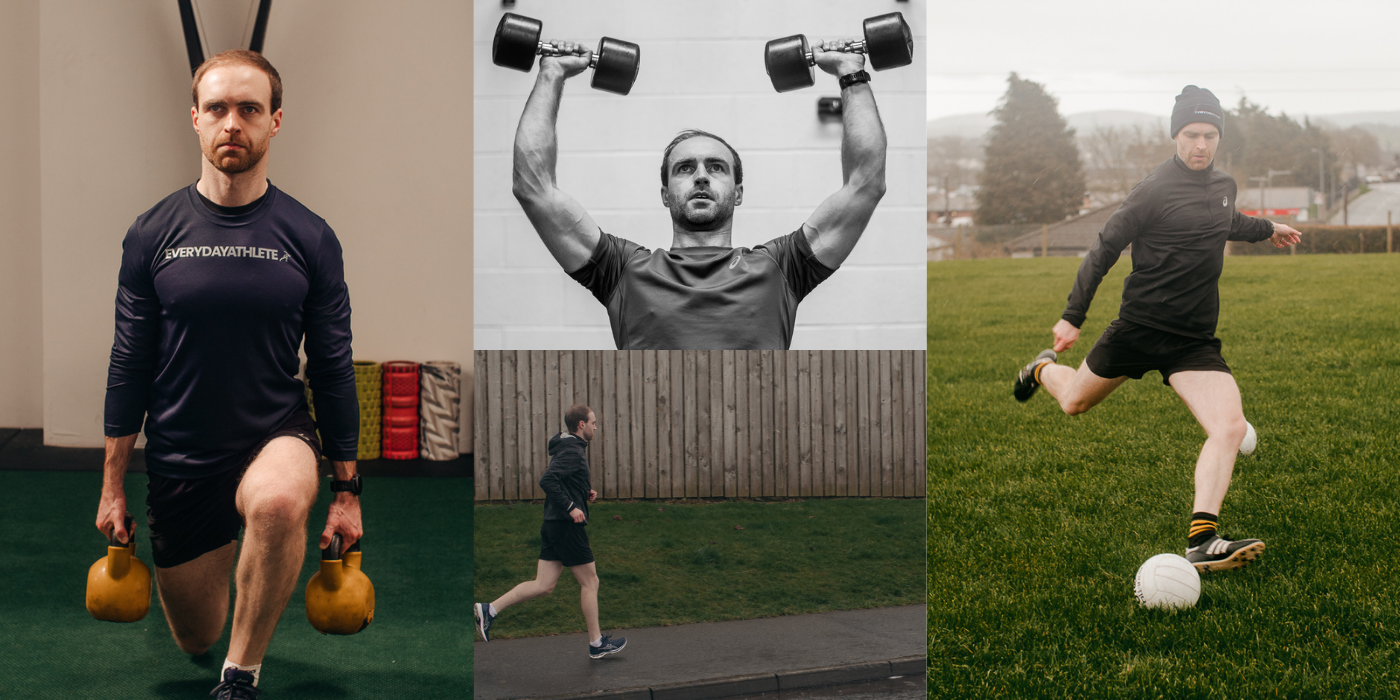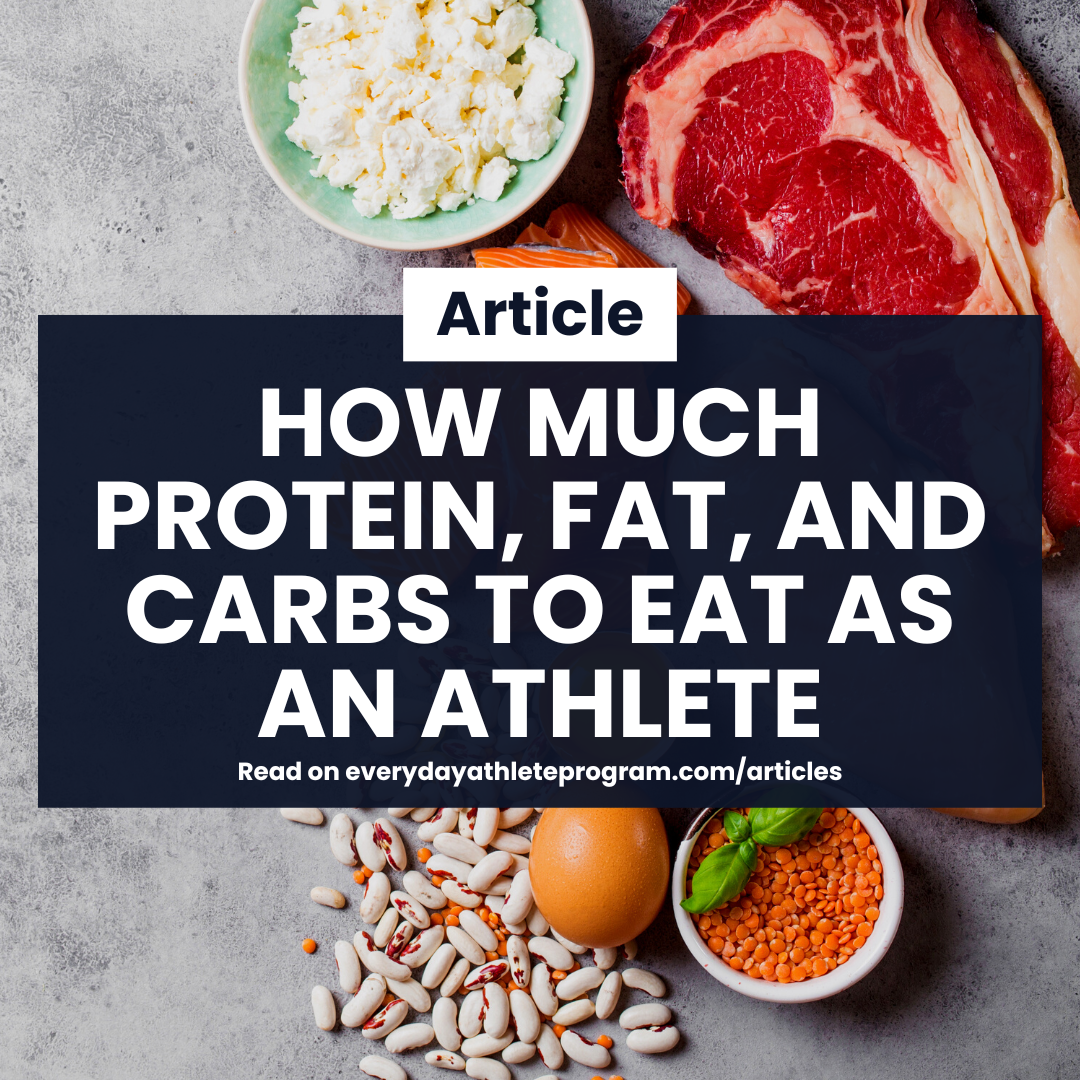After reading previous articles about calculating calorie and macronutrient targets, you might ask how, knowing all these numbers, you might go about hitting them.
There are a number of ways of doing so, with varying levels of accuracy and ease of use.
In order to achieve a level of accuracy that is likely to lead to the improvements most people are hoping to see, some level of food tracking, at least for a period of time, can be hugely beneficial.
This generally involves either writing down the food you eat each day or inputting it into an app, in order to assess your nutritional intake on a daily basis, allowing you to adjust it as needed.
There are a multitude of different components of food that you could be looking at, to the point where it has the potential to become confusing.
In this case, we want to balance what is optimal vs. what is sustainable for the period of time that you’re going to be doing it.
With that said, there is a range of options when it comes to what figures you should be paying attention to when tracking your food.
Levels of Tracking
On one end of the food tracking scale, you could opt to simply pay attention to the number of calories you are taking in, disregarding the macronutrients (protein, fat, and carbohydrate) for now.
This approach will likely be better than not tracking at all, but will potentially lead to missing out on the previously mentioned benefits of hitting your macronutrient targets.
That trade-off might be worth it for you if you’re new to the food tracking process and want to get the process started without overcomplicating it.
However, you may want to push things in the direction of optimality by then starting to include a focus on protein along with the calorie target.
This will allow you to move bodyweight in the desired direction whilst likely covering your recovery and muscle-building needs, but may see you missing out on some of the potential fuelling benefits of optimising your carbohydrates and fats intake.
Finally, adding in that element of tracking carbohydrates and fats brings another level of accuracy, allowing you to reap those benefits.
As mentioned previously, how you choose to track, and what figures you choose to pay attention to, depends on a few aspects including what level of nutrition you’re currently at and how much effort you’re willing to put into ensuring your progress.
For a beginner, a good approach is to bring these elements in in a progressive fashion, starting with focussing on hitting your calorie target for the first few weeks, after which you can start to also pay attention to your protein intake for the next few weeks, followed by starting to pay attention to carbohydrate and fat intake once you’ve been consistently hitting your calorie and protein targets for a few weeks.
This means you will be progressing along the way with your body composition and performance, but will also be progressing with your nutritional approach as a whole.
So, the progression of levels of food tracking looks like: Calories only → Calories and protein → Calories, protein, fats, and carbs.
How to Track
Regardless of what metrics you chose to keep an eye on, you’re going to need to track the food that you are eating.
This could be done by writing down the foods you are eating, searching the internet for the calorie and macronutrient contents of them, and adding them up to find your daily total, but technological advances mean that there are now much easier ways of tracking your daily intake and assessing how close you are to your daily targets.
Phone apps like ‘MyFitnessPal’ and ‘Chronometer’ are excellent tools in this regard.
These apps have databases of foods, which allows you to search for specific foods within the app and enter the amount of that food that you’ve eaten.
The app will automatically add that to your total intake for the day, as well as giving you an indication of how many calories and grams of each macronutrient you have left before hitting your daily targets.
Each of the dozens of food tracking apps out there will have their pros and cons, so it’s a good idea to play around with them and see which one best suits your needs and preferences.
Getting Accurate with food tracking
The level of accuracy with which you will be able to hit your goals will also be based on how accurate you are with the data that you enter into the app.
Are You Tracking Everything?
This firstly includes how diligent you are in ensuring that you are tracking every piece of food or drink that you consume.
It can be quite common to underreport food intake consciously or unconsciously, to the extent that even registered dieticians mistakenly underreport their intake in clinical studies!
This underreporting can be a result of simply forgetting to input full meals, but can also include leaving out small snacks, bites, spoonfuls, and drinks of things that you may think are too insignificant to track.
Ultimately, however, these things can add up to substantial differences over the course of a day or week, so it’s important that for optimal accuracy, you track everything you eat and drink.
Are You Tracking the Correct Amounts?
Another cause for inaccuracy is a lack of accuracy in the amounts of the foods that you are tracking.
If you are not weighing the individual ingredients, you can easily be off in terms of how much you’re actually eating.
For example, if you’re tracking ‘1 chicken fillet’, there is likely to be a level of inaccuracy, since chicken fillets vary in size and weight, and therefore calorie and macronutrient content.
Instead, it would be much more accurate to weigh your chicken fillet and enter the amount in grams, giving a true reflection of the calorie and macronutrient content of that food.
Are You Tracking Cooked or Raw?
Another common issue involves weighing food cooked vs. uncooked and tracking it as the other.
Because water is generally added to some foods (think pasta or rice) and taken away from other foods (think vegetables or meat) during the cooking process, it is important to be consistent in tracking the food in the state you actually weighed it.
For example, if you cook a 150g chicken fillet, it might lose 25g of water during the cooking process, and therefore weigh 125g when cooked.
In this case, you’re left with the dilemma of whether to use the 150g figure or the 125g figure.
I generally recommend that clients track food in the raw form, since this isn’t subject to the length of cooking time, in the way that using the cooked weight would be, allowing for more consistency.
But that isn’t always possible, since sometimes you’ll be buying your food already cooked.
For that reason, the main recommendation here is that if you weigh it in the raw form, you track it in the raw form, and if you weigh it in the cooked form, you track it in the cooked form.
This can usually be done quite simply by adding in the word ‘raw’ or ‘cooked’ when searching for the food in your food tracking app.
E.g. Search: “Chicken raw”, and then enter the weight of the chicken fillet when it was raw.
Are You Tracking Food Someone Else Has Cooked?
You may run into some difficulties when you’re not the person cooking your food, or when you’re cooking a large portion of food (for a family meal for example).
In these cases, it will be about doing your best to give a good estimate of the food you’re eating.
It won’t be perfect, but will likely be better than if you hadn’t tracked at all.
Additionally, your ability to accurately estimate your intakes in these cases will be dependent on your previous tracking experience.
You’ll be much better at visually estimating what weight of rice you’re eating, for example, if you’ve weighed and tracked rice dozens of times previously.
Your ability to accurately track your food will improve over time, and more than that, your ability to accurately hit your calorie and macronutrient targets will improve.
This is key aspect of the tracking process, and will allow you to move away from the tracking process when the time is right.
The first few weeks of the tracking process will involve getting used to the app, as well as starting to observe how close or far away you are from the targets set out.
As the weeks go on, you’ll then begin to recognise where you are specifically over or under your targets, and by starting to look at what foods contribute to each of the metrics, you can start increasing or decreasing specific foods within your diet to adjust your intake, allowing you to get closer and closer to the targets over time.
Not only that, but you’ll also start to develop a better instinct for what meals are conducive to your goals, and what a day of eating looks like when it comes to hitting your targets.
Down the line, this will mean that you are able to be pretty close to your targets without needing to track everything to a tee, allowing you to move away from the tracking process as you see fit, and then take up tracking again as and when it is needed to dial in your intake for specific periods of time for specific targets.
This means that whilst food tracking is great for the reasons outlined earlier, it also becomes a means to teach how much you should be eating on an ongoing basis, even without tracking over the long-term.
Article Written By Conor O’Neill
Conor O’Neill is a Nutritionist, Strength & Conditioning coach, Psychologist, and Author.
He has helped 1000+ everyday athletes to pursue excellence in their physique and performance through optimising their nutrition, training, and psychology.
You can find out more about The Everyday Athlete Program by going to everydayathleteprogram.com/coaching.








